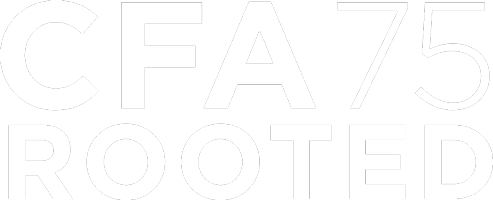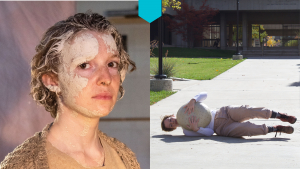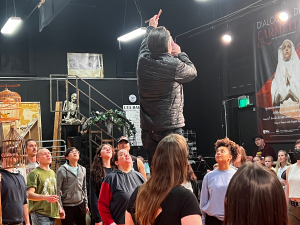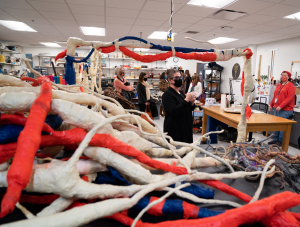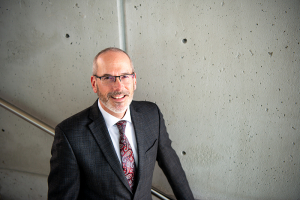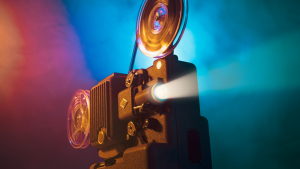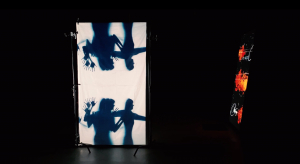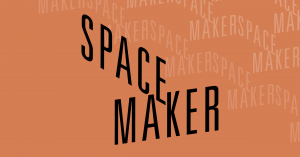Displaying items by tag: G1O1
CFA Outstanding Research 2022 Finalists
Each year, many fine arts students immerse themselves in exciting research, leaving a mark on their disciplines.
The College of Fine Arts is excited to celebrate the exciting work of two finalists for Outstanding Undergraduate Researcher 2022.
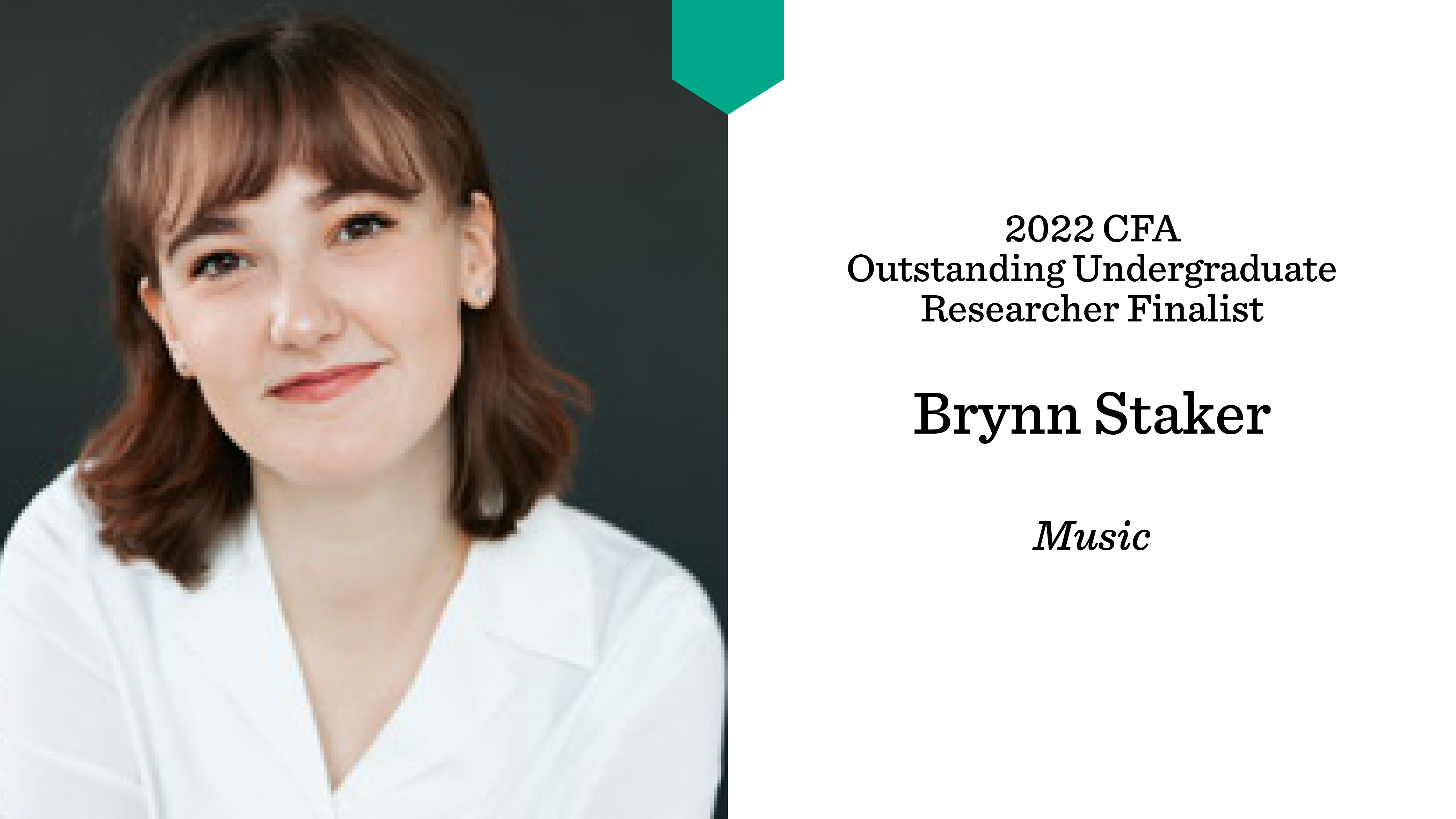
Brynn Staker St. Clair collaborated with Dr. Elizabeth Craft in the musicology department in the U School of Music on her research on early American musical theatre. Staker catalogued and organized clips from Illinois newspapers that provided much-needed information on George M. Cohan and early American musical theater, as well as examined Utah newspapers from Cohan's time to better understand his national reach. She presented the research findings alongside Dr. Craft at "Fridays with Faculty." Staker was also employed by the University of Utah History Project, working to build a comprehensive history of the School of Music, spending signifiant library hours cataloguing programs and other historical university resources.
In Their Own Words
"I began my research because I took a class from Dr. Elizabeth Craft. I discovered a fascination with American music. It’s always been my favorite to sing, as I consider myself a poetry nerd. Dr. Craft talked about the book she was writing, and that immediately caught my attention. I credit her with inspiring my interest in research.
This semester I have expanded my research to focus on local performances. I have loved familiarizing myself with Utah performance history: the significant players, the vast appreciation, and the general response. I feel like this branch of my research has helped me connect very personally with the material.
My research last semester was all about race in American musical theater. This was a fascinating project for me and allowed me to look more deeply at the prejudices embedded in the performances this country has come to love. It certainly taught me to look closer and to examine art through different perspectives."
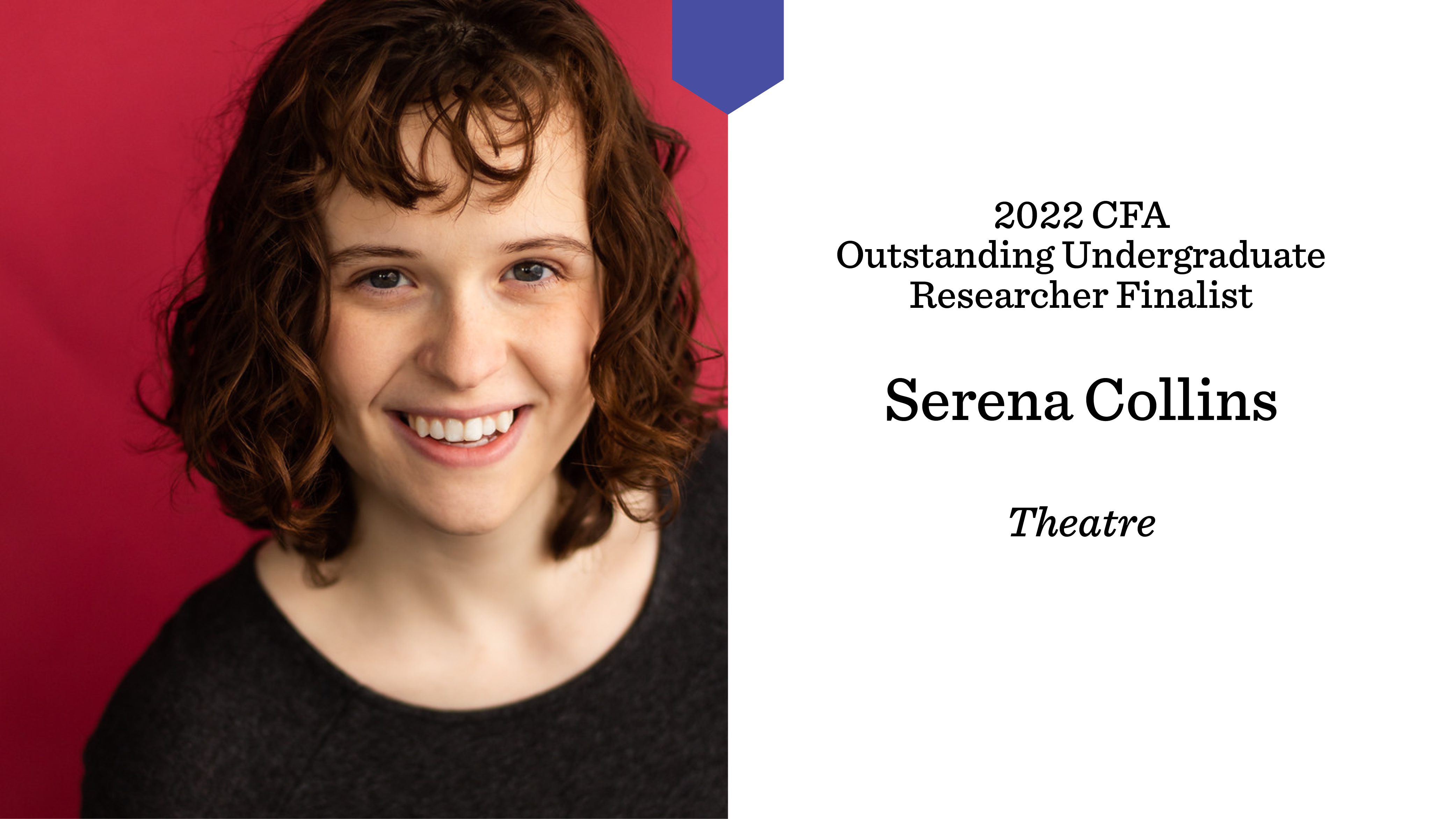
Serena Collins saw her original, full-length play entitled "Sympathizer" through all of its writing and production stages over the span of nearly two years and four academic semesters. Her research culminated in an off-campus production of the play, as well as a staged reading on campus as part of the Department of Theatre's New Plays Workshop, April 25-27 at PAB 115.
"Sympathizer" centers around main character Calla, who finds herself in uncharted territory when her oldest and closest friend does something bad. With strong opinions on all sides, Calla tries to figure out what is right in the #metoo era. The script lives in the aftermath of sexual assault and begs the question, how do we begin to heal?
In Their Own Words
"One of my favorite discoveries came from an audience member at the production of "Sympathizer." They were a [sexual assault] survivor themselves and after the performance we had a long conversation about the difficulty of a survivor seeing their perpetrator go on to live a normal life. In that conversation, I realized an important nuance that the script was missing. I realized that, as important as it was to highlight empathy as an agent of change, it was equally important to validate the fact that no one owes a perpetrator a second chance. Full stop. That conversation added a whole scene to the current draft of the script!
When I started thinking about these issues, I was afraid to share my questions and thoughts with the people in my life because it was taboo to question the logic of my political group. Questioning meant disloyalty—it was equated to being what my peer group called an “abuser sympathizer.” Now, I am less afraid of social repercussions because I feel so passionate about the conclusions that my research has brought me—human beings are complicated. Shame doesn’t work. Empathy does.
Professors in the Actor Training Program would often ask us to identify our artistic voices by asking ourselves the question: 'as an artist, what do you need to say?' Through my research, I have found my artistic voice. What I believe I have to offer to the world is my passion about and belief in the power of empathy."
The College of Fine Arts is delighted to present the 2022 Outstanding Undergraduate Researcher award to Comstock from the Department of Art & Art History.
In 2015, The Office of Undergraduate Research established the Outstanding Undergraduate Researcher Award to recognize an outstanding undergraduate researcher from each college. Faculty mentors are invited to nominate students, and awardees are selected by committee. The criteria for the Outstanding Undergraduate Researcher Award include: a record of sustained commitment to developing research skills and knowledge under the supervision of a faculty mentor, evidence of independent and critical thinking, active participation in research-related activities on campus, and positive contributions to the research culture of the department, college, and university.
Comstock’s impressive accomplishments as an undergraduate researcher in the College of Fine Arts center around a commitment to creation of a body of work investigating applications of new materialism to contemporary ceramics.
In Comstock’s personal statement, they write about the impact research has had on their work as an artist, “As I was collecting my ideas and scholarly research in my thesis, every new piece I generated picked up a conceptual thread and grew upon it. I’ve found increased independence moving through my degree as a result, finding an ever-increasing clarity around a theoretical cache that all my work pulls from regardless of medium…. Everything has all become fodder within a holistic and immersive creative research process.”
Comstock presented their research titled “A Balmy Elsewhere: Manifesto for Restorative Materialism” at the 2022 Undergraduate Research Symposium, and is submitting their Honors thesis in full to the Undergraduate Research Journal. Their work will also be exhibited Friday, April 22, 2022 at Studio Elevn in Salt Lake City. This summer, with support from the College of Fine Arts Dean’s Travel Fund, Comstock will present a performance piece in Berlin, Germany with artist collective Aktionskunst Park Gruppe.
In Their Own Words
Name: E.C. Comstock
Pronouns: Any Pronoun
Majors and minors: Art--Ceramics emphasis, Sculpture minor, Honors
Hometown: Boise, ID
Three words that describe you: amorphous, inquisitive, fraught
Most impactful class or professor: The most impactful class I had was Ceramic Surfaces, the level of experimentation Brian Snapp encouraged in Surfaces hugely expanded my practice and entirely shifted my approach to a far more holistic conception of form and surface. This class also introduced me to Skin: Surface, Substance + Design by Ellen Lupton which became a vital text in my thesis, and served as a formative period of bonding with my clay cohort.
A CFA moment you’ll never forget: I will never forget my first wood-firing, which was the first time I felt like I was part of something larger than myself in my program. The exchange and passing down of technical knowledge is so visible and tangible during the two-day long firing, and the sharing of food and music cements the community building that occurs while firing.
What inspires you: I'm inspired by fringes and edges, the generative friction found when rich, differing substances meet one another or theoretical and practical approaches butt up. Bringing a lens of relational aesthetics to my everyday life has been a major source of inspiration, considering every action I make an art action and every material I handle a potential collaborator.
Summary of major accomplishments on or off campus: Outstanding Sculpture Student nomination, International Sculpture Center; Eccles Scholar (received Eccles full tuition scholarship through Honors College); Emma Eccles Jones Fine Arts Housing Scholarship, exhibited in Paper and Clay juried exhibition at Utah State University, Statewide Annual at the Rio Gallery, Aktionskunst Park Gruppe in Berlin, Germany; received Undergraduate Research Opportunity Program funding and a Small Grant from the Office of Undergraduate Research.
"As I was collecting my ideas and scholarly research in my thesis, every new piece I generated picked up a conceptual thread and grew upon it. I’ve found increased independence moving through my degree as a result, finding an ever-increasing clarity around a theoretical cache that all my work pulls from regardless of medium…. Everything has all become fodder within a holistic and immersive creative research process."
Performing Sondheim’s “Sweeney Todd” with the University of Utah opera program has been a long-held aspiration for director Robert Breault. Beyond its cultural popularity, moody environment, and complex characters, the show allows for broad collaboration and interdisciplinary participation.
“I always try to choose pieces that will allow [U Opera] to include as many students as we can. ‘Sweeney’ has a lot of ensemble work that allows more performers to be part of the storytelling – there are about 40 of us involved,” Breault said.
To pull off the mighty production that runs this weekend (April 15-16) at Kingsbury Hall, collaborators from all corners of the U’s performing arts units have come together, embracing the idea that “it takes a village.”
The cast is made up of not just opera students, but those in musical theatre and dance as well. Logistics will be run by Stage Management students in Department of Theatre, led by Amber Bielinski. Music director Jeffrey Price also directed the music in the first Utah production of Sweeney 40 years ago – and was the first to plant the idea of doing the production at the U. The Utah Philharmonia, conducted by School of Music professor Robert Baldwin, provides the score.
It is especially exciting to see faculty from each of the performing arts units lending their particular expertise to elevate the production. School of Dance’s Melissa Bobick brings her ballet eye as choreographer. Department of Theatre’s Sarah Shippobotham serves as both Intimacy Director and as a dialogue coach.
"The idea that we can have this interdisciplinary cooperation in one production mirrors the way it will be in the real world. Stage management, singers, dancers…we all get to know each other, and realize how it all works together."
After an already extensive singing career, James Bobick, who plays the titular role, is pursuing his MM in the School of Music. Working in this way, he says, is an authentic glimpse at how the professional world operates.
“This is about training young musicians, singers, and performers. Whether they become professionals or not, they can use this skill set as they move on in their life and in their careers," he said. “The idea that we can have this interdisciplinary cooperation in one production mirrors the way it will be in the real world. Stage management, singers, dancers…we all get to know each other, and realize how it all works together.”
Although musical theatre and opera often vary quite a bit stylistically, “Sweeney Todd” has been an opportunity for the two disciplines to learn from one another, and get stronger as a result. “The musical theatre students are getting a chance to hear how we sing, and we are learning from their acting,” Breault explained. “We’re singing with mics for the first time, and we aren’t using supertitles. I did this purposely to put the pressure on all of us to improve our diction.”
Undergraduate senior Brynn Staker, who plays Beggar Woman, also spoke to how the character’s dramatic needs were affecting her singing approach. “The accent work has been tricky,” she said. A lot of times when you are singing, your vowels tend to sit in the same place. In this, it’s been different because accents communicate class differences. We’ve had to work to get a brighter sound to convey the same things the accent would convey while we sing.”
There is quite a bit of character work necessary to bring this dramatic tale of revenge home.
“Sweeney is, like the great operatic characters, complicated, and has more levels of his personality than most people give him credit for,” Bobick said. “This is a real man, with real problems, and real conflict. And as he seeks to resolve them, it’s not a spontaneous impulse – this is fifteen years of brooding over injustice. Fifteen years he has tried to figure out how he can avenge the wrong done to him and his family.”
Staker agreed that the story allows for deeper performance. “I feel like in opera we put on a mask a lot – we sing big words with big sound,” she said.” This show gives us a chance to portray real people in real situations, and allow the audience to connect with them on a vulnerable and intimate level."
Ultimately for Breault, the best thing about "Sweeney Todd" is coming back together after two full years of missing the stage – another reason to more fully embrace collaboration.
"It’s been over two years since we have had the family feeling in the Voice Box that we had before the pandemic. To have everybody hanging out, to see people spontaneously dancing while working on scenes – I see the joy of finally coming together again. This has been so fun for me as a director."
Attend the tale of Sweeney Todd!
Tickets on sale now
U Students free with Arts Pass
Apr 15 @ 7:30 pm
Apr 16 @ 7:30 pm
Kingsbury Hall
An inside look at props design for U Theatre's “Naked Mole Rat Gets Dressed: The Rock Experience”
By Emeri Fetzer
This week, the University of Utah Department of Theatre will dazzle audience members of all ages with “Naked Mole Rat Gets Dressed: The Rock Experience,” a musical adaptation of a children’s book by Mo Willems. Directed by General McArthur Hambrick, with music by composer Deborah Wicks La Puma, the show follows Wilbur, naked mole rat with a knack for style.
The props studio in the new Price Theatre Arts Building has been a wild flurry of labor and excitement, as props designers craft all manner of objects and furniture central in bringing Wilbur's world to life. Props Master Arika Schockmel worked alongside two student assistant designers, Mae Hinton-Godfrey and Sam Dalton, to build rolling root stumps, clothing carts, signs, and a storefront – just to name a few pieces.
Assistant prop designer Mae Hinton-Godfrey initially started her studies at the U in education, and was taking a costume class just for fun. It was when she experienced great success in her first paid job as a costumer that she started seriously considering it as a career. Now, she never wants to leave. 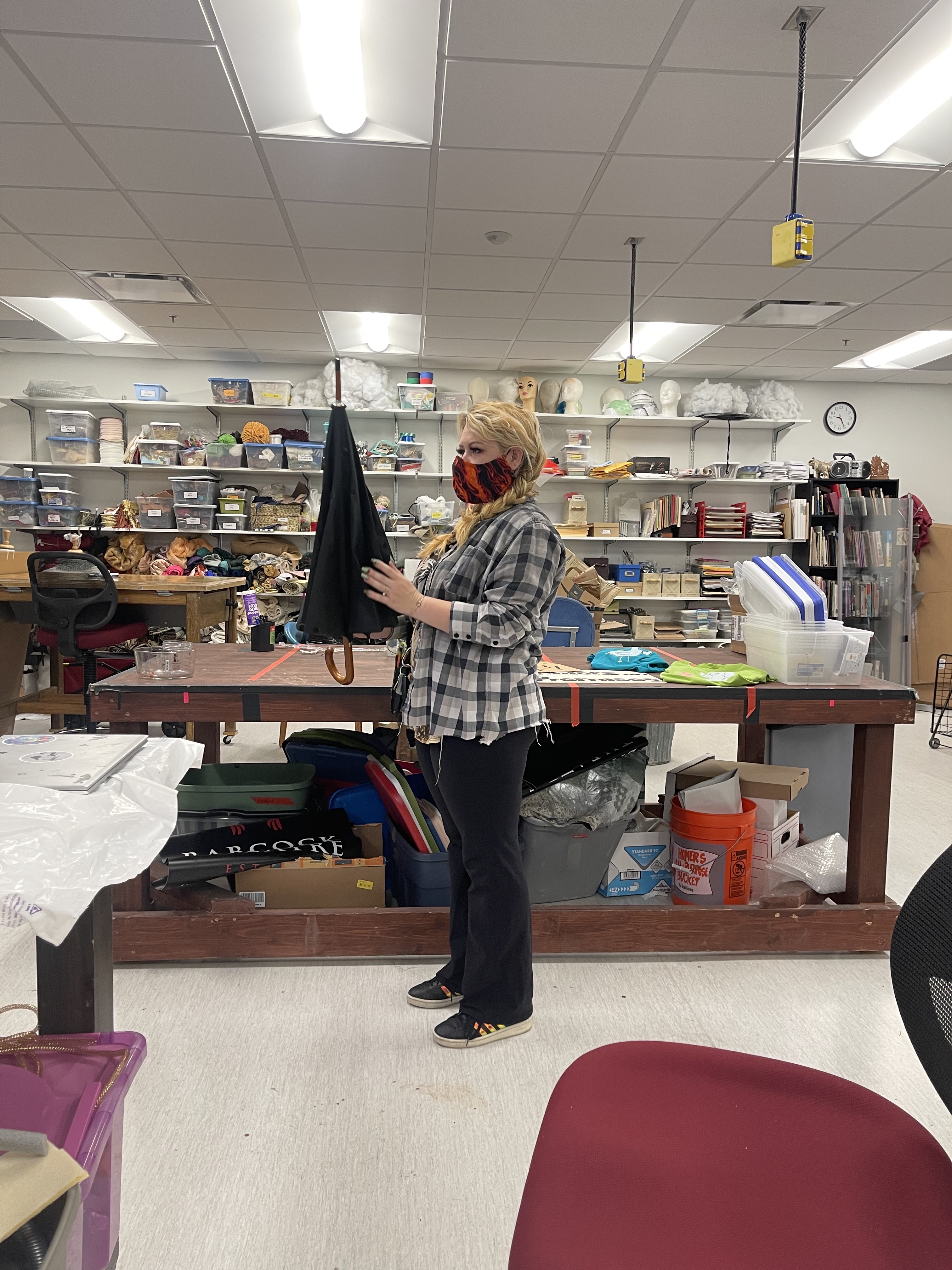 Mae Hinton-Godfrey demonstrates one prop
Mae Hinton-Godfrey demonstrates one prop
“I have enjoyed seeing the progression from a story book into a fully three-dimensional world with a lot more realism than I had initially expected.”
“Naked Mole Rat Gets Dressed: The Rock Experience” is her first foray into props. “I have found that it’s been really helpful to understand the role props plays, filling in the gaps between set and costume. I like seeing where we can support other areas rather than just working in an isolated environment. As a costumer, I tend to try to do everything on my own, and not necessarily communicate with other departments,” she said.
This show has been both more collaborative and more playful than some of those past experiences.
“I am actually really excited for this show because it’s a musical and a kids’ show," Hinton-Godfrey said. "We were going to make a lot of the designs two-dimensional, but it has evolved into some more organic designs. For example, the set is based on some of the beautiful red rock formations here in Utah. I have enjoyed seeing the progression from a story book into a fully three-dimensional world with a lot more realism than I had initially expected.”
Prop artist Sam Dalton is in his final year as a theatre major at the U, then plans to go to grad school for a Master’s in higher education. Besides lending a hand on roots, he was responsible for cue card signs, which he drew free-hand, based on Mo Willems whimsical style. “It was really fun to create the things that get to be sillier, and get interacted with in the show,” he said. “The type face for the signs is called Grilled Cheese!” 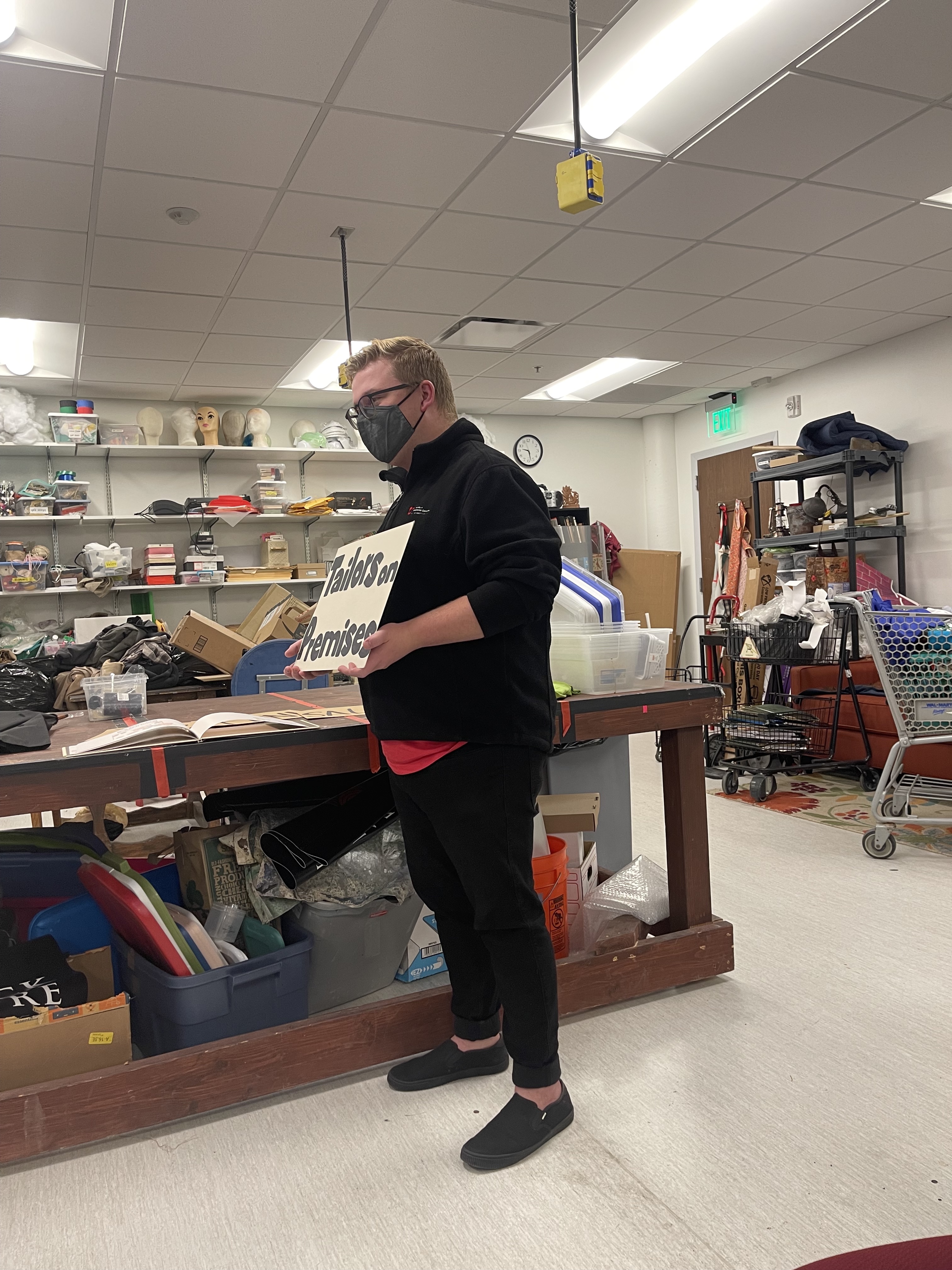 Sam Dalton shares signage
Sam Dalton shares signage
With most of his design experience in set, Dalton is also having fun discovering the world of props. “This process has helped me understand the nuances,” he explained. “Just because something is a clothing item doesn’t mean it’s costumes. It’s really about how it is being used in the show, and who is using it. It has made it easier to develop relationships with other areas that help when you need something to make the show better.”
Disruptions in the supply chain have made this particular process challenging for the team. But creativity has prevailed, and even revealed some exciting innovations.
“Items are more expensive right now, and shipping is more expensive and slower, so we had to be very creative and manage our expectations,” Schockmel said. “We had a plan for how we were going to build things, and then it turned out we couldn’t afford it, so we had to go with plan B. Plan B was garbage, which was better. It was faster, easier, and more creative for all the students involved.”
"Props is something you don’t know you like until you do it. All students have to take a lab aspect, so they will work with costumes, set, props, and sound. I try to grab people that enjoy crafts and encourage them to take my class. It is wonderful for problem solving."
Recycling and sustainability are important to the design team. Many would be surprised to know just how many materials in U Theatre’s shows are repurposed or up-cycled.
“Our technical director salvaged baling wire from a house he was clearing. We had to line everything with wire so we could bend it into the shapes we needed. People were bringing us plastic bags, bubble wrap, and we brought things from home,” Schockmel explained.
They were also beneficiaries of a happy mistake. “Two years ago, there was a mistake in ordering paper towels for our building’s machines, and so janitorial staff came, and asked if we would like the paper towels that didn't fit. We said, ‘Oh yes, we would!’ We’ve used thousands of paper towels to paper mâché. And we got our paint from the Department of Film & Media Arts when they shut down a set last season.”
Additionally, Pioneer Theatre Company donated piles of clothes they were cleaning out from their costume department this summer, and a few costume racks that were on their way to the salvage yard. A win-win for everyone.
Department of Theatre curriculum requires that all students take a design element, even if they are focusing on performance. This prepares them for the professional world, where those in theatre wear various hats.
“Props is something you don’t know you like until you do it. All students have to take a lab aspect, so they will work with costumes, set, props, and sound. I try to grab people that enjoy crafts and encourage them to take my class. It is wonderful for problem solving,” Schockmel said.
Come see the amazing work of this team, as well as the entire cast and crew of “Naked Mole Rat Gets Dressed: The Rock Experience.” We can’t wait to rock with you!
NAKED MOLE RAT: THE ROCK EXPERIENCE
Babcock Theatre
GET TICKETS
PERFORMANCE TIMES
Nov 12 @ 7:00 pm
Nov 13 @ 11:00 am
Nov 13 @ 2:00 pm
Nov 14 @ 2:00 pm
Nov 14 @ 5:00 pm
Nov 18 @ 10:00 am
Nov 19 @ 7:00 pm
Nov 21 @ 2:00 pm*
Nov 21 @ 5:00 pm
*Sensory Friendly performance
ASL INTERPRETER
Nov 19 @ 7:00 pm
Remember, all U students get in free with their U Card, thanks to Arts Pass!
Dean John Scheib elected to International Council of Fine Arts Deans’ Board of Directors
At its 57th Annual Conference, the International Council of Fine Arts Deans (ICFAD) announced University of Utah College of Fine Arts Dean John Scheib as one of three newly-elected members of the Board of Directors.
ICFAD, the multi-national alliance of executive arts administrators, provides professional development opportunities and facilitates forums for the exchange of ideas, information and issues of common concern for the arts in higher education.
In this capacity, Scheib will serve with eight other members who all act as “representatives of the membership, assuring that the organization runs in accordance with the agreed upon mission, policies and laws of the membership.”
He has been a member of ICFAD since 2017 and has served for the last two years as an ICFAD Mentor in its Leadership Development Program and will continue his service on ICFAD’s Leadership Development Committee.
“A key motivation for me throughout my life has been my desire to serve my community as best I can,” Scheib said. “In my professional life, this sense of purpose often manifests itself through engaging in efforts to empower those whom I serve by helping to facilitate growth and the realization of ambitions and aspirations (work that remains to be among the most fulfilling and rewarding to me, personally). I hope to be able to help advance the important work of ICFAD through bringing to the Board and our collective efforts not only someone who greatly values and believes in what we do, but also a multidimensional perspective from having served in a variety of different arts education, leadership, and advocacy roles within a variety of different institutions, communities, and contexts.”
Join us in congratulating Dean Scheib on his new appointment!
Also Sisters screen new work worldwide
Assistant Professors in the U Department of Film & Media Arts, Miriam and Sonia Albert-Sobrino or the Also Sisters, are busy this month screening new films internationally!
Here's a look at their newest work and where it is being shared!
AURA
“AURA,” an experimental film by the Also Sisters premieres October 12 at the 54th edition of the world's foremost international festival of fantasy and horror movies, the Sitges Film Festival (Catalonia, Spain).
“AURA” is one of the only eight films selected to be part of the “Noves Visions Program,” and is a contender for the Best Short film. The “Noves Visions Program” consists of films of all nationalities, previously unreleased in Spain, produced in 2020/2021 and fantasy themed, which are committed to experimentation, new languages and formats, and genre hybridization.
"AURA" was born out of the Artivism4Earth initiative launched by Hasse Borup and Elisabet Curbelo in the U School of Music. The film —made by Sonia and Miriam Albert-Sobrino— is scored by Assistant Professor Elisabet Curbelo. This film is a testament to collaboration as a central quality of the College of Fine Arts.
"FACE NOT RECOGNIZED, TRY AGAIN"
"Face Not Recognized, Try Again," a claustrophobic horror short film will have its worldwide premiere the weekend of October 15th in the city of Telluride, at the Colorado's first and longest-running genre film festival, the Telluride Horror Show. Listed as one of the 50 Best Genre Festivals By Moviemaker Magazine, this festival has gained a notable reputation in the arena of horror.
WHAT'S NEXT
“What’s Next?” a female lead anthology series — partially shot with the support of the students enrolled in the “Grip and Lighting” and “Digital Cinematography” courses taught by Sonia and Miriam — has enjoyed and continues to enjoy remarkable impact:
- The episode “The Foley Artist” was chosen as a finalist for the 13 minutes of Horror Film Festival, a competitive initiative that give women horror filmmakers greater exposure and more opportunities through strategic partnerships. Among many others, this film was hand-picked by well recognized film professionals such as Robin Jones, VP of TV Development & Programming at Blumhouse, the production company behind such horror titles as "Insidious," "Get Out," "The Invisible Man" (2020), and the upcoming "Halloween Kills."
- “The Foley Artist” was additionally awarded with a privileged spot among only other 12 episodes to screen at the popular streaming platform, Shudder.
From August 13th to September 13th, this episode of “What’s Next” —starring former graduate student Elisabeth Lowe and shot during a digital cinematography class during the Spring of 2020— gained international exposure in over 6 countries across the world (US,Canada, UK, Ireland, Australia and New Zealand). Shudder is an American over-the-top subscription video on demand service featuring horror, thriller and supernatural fiction titles, owned and operated by AMC Networks. - The entire series screened as part of the international competitive category at the Carballo Interplay Film Festival, the leading web-series-only-festivals from Spain.
- An additional episode from this series — “Smile More” — will premiere at the Les Femmes Underground International Film Festival next spring 2022. This episode was 1 of 30 shorts chosen from over 5,000 submissions worldwide.
For those interested in seeing the 6 episodes currently available, please head to https://whatsnext.show/
"On the Margins of Metaxy" by Sonia and Miriam Albert-Sobrino debuts internationally
Assistant professors in the U Department of Film & Media Arts, Sonia and Miriam Albert-Sobrino (Also Sisters), have debuted their new short film, “On the Margins of Metaxy,” at the Sydney Underground Film Festival in Australia.
In an exclusive group of only 14 short sci-fi films included in the festival, “On the Margins of Metaxy,” is an experimental film that takes audiences to an imaginary world where the boundaries of the normal are broken or bent.
Audiences can stream the film online until September 26th.
But those local to Salt Lake City will have an exciting opportunity to interact with the film in an even more immersive way.
A transmedia installation piece will debut at the Finch Lane Gallery on October 8th and will run until November 19th. Conceptually inspired by the COVID-19 pandemic, the installation immerses audience in a space of transition inviting them to appreciate the healing qualities of the in-between and of thresholds. Catch a brief preview here.
Viewers can also join Sonia and Miriam during the gallery stroll on October 15th at 6p at the Finch Lane Gallery.
In anticipation of the opening of Utah Museum of Fine Art's "Space Maker" on August 21st, we caught up with Department of Art & Art History alumna Nancy Rivera, curator of the exhibition which features 33 artists from the department's faculty.
As UMFA describes, " 'Space Maker' explores the tensions, histories, and myths that shape our experiences of the world. These works, created by a variety of artists in a dynamic range of media, question the bonds between place and identity, reflect on our relationships to the land, and explore the realities that emerge when an imaginary world is created."
Let's take a closer look at the show.
After a year of isolation, what was it like to come back together on a group show of this size?
What was really cool about curating the exhibition was that when I started looking at the work that the artists produced over the last year or so, it was apparent that everyone was impacted and influenced by some of the same issues. Even though their work is created in such different ways – the materials they use are so different – the ideas and concepts that you see throughout the work started to become a narrative that you could connect to and say, “I felt that same way during the pandemic."
It was interesting to see that in some ways, even though we are isolated, those communal experiences are still very present. We all see the things that we experience in a similar manner.
It’s amazing to see that your professors, the people you are learning from and interacting with now in such a big way, are creating such elevated work. It’s something that they should feel inspired by and really proud of – that we have this type of talent within the University of Utah. I really hope students will go and see the show.
How did the "Space Maker" theme emerge and what do those words mean to you?
A lot of the work the artists created very much explored the idea of place – how we relate to it, how we engage with it, how we perceive it. We were forced to be confined in our homes, and were hyper-aware of the things that surround us – and as artists you tend to look at things through a different lens. So they created, in their own way, an interpretation of the spaces they were in, or really thinking about, or even missing and grieving throughout this pandemic. I think it's something you can apply to a lot of the work.
I also wanted to create an idea to view the show in a way that was broad enough that you could find different types of interpretations, because we have 33 artists. The work that they produce is so varied in process and concept. Looking at it through this lens of thinking about space, and their creation of it, is something that everybody can say they think about through their work. Every one of the artists is working with very specific ideas and themes their work is connected to, but in the end, I think there is an overarching idea of a sensibility towards space that connects them all.
What was the logistical process like?
Coordinating all of this is such a big team project, and I could not have done any of this without the UMFA’s amazing staff support. They have this down. All of the artists were invited to submit up to three works, and then I selected the ones I wanted to include in the exhibition. And there were discussions around “how does this fit the theme?” 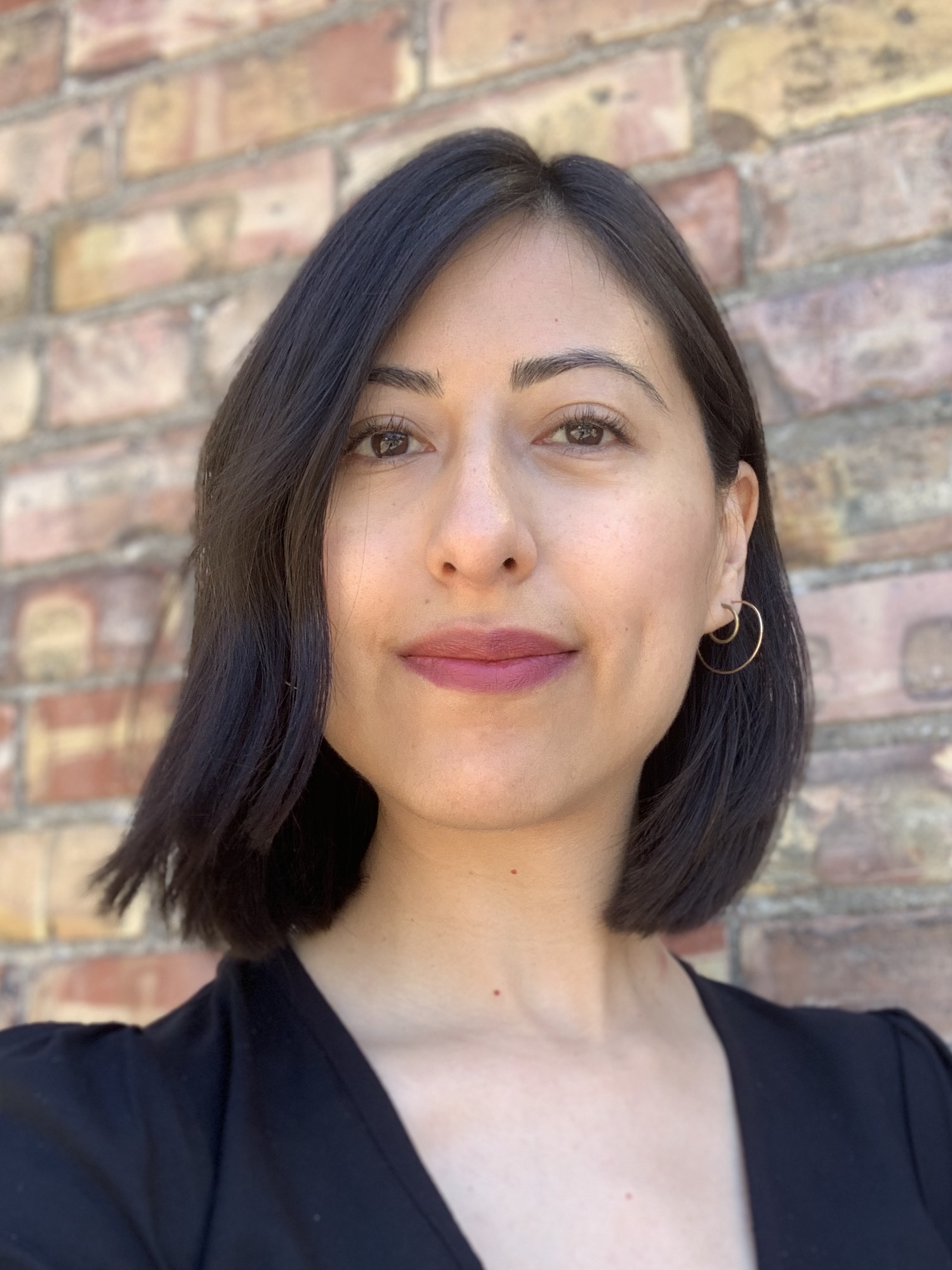 Nancy Rivera, "Space Maker" curator and U alum
Nancy Rivera, "Space Maker" curator and U alum
When I first started selecting works, I wasn’t thinking about an overall theme. The theme came to me as the work was selected and I was looking through artist statements and titles, and information about each of the works. It was more about selecting the best works aesthetically – the craft and the concept. Everybody is so talented. In the end, the decision of what works were included was very intuitive, selecting work that was representative of each of those artist’s careers but that also spoke to a sensibility for the times that we are living in.
There are some great moments in the exhibition of really unexpected materials. And, also how artists took this moment of being isolated, not being able to enter certain spaces, and took that as an inspiration to create. Sometimes I think that without having had something so profound happen to us, some of those ideas would not have emerged. Much of the work was made in the past year or two, and a majority was created during the pandemic. To see the way that they were inspired to create in that period of time was amazing. These are artists whose work I am really familiar with from my time being their student and even before that. So it's been great to see how their work continues to grow.
What is it like to work with the faculty, now as an alum?
It's such a different dynamic. I still look up to a lot of them, and I am so honored to be able to work with them as a curator, in a way that i never expected. I am grateful for the way that they have embraced my role in the exhibition. It has been great to have one-on-one conversations and brainstorms with them about their work.
And why should students go to "Space Maker?"
It’s amazing to see that your professors, the people you are learning from and interacting with now in such a big way, are creating such elevated work. It’s something that they should feel inspired by and really proud of – that we have this type of talent within the University of Utah. I really hope students will go and see the show.
We can't wait to see the work from these 33 wonderful artists:
Edward Bateman
Simon Blundell
Laurel Caryn
Erika Cespedes
Lewis J. Crawford
Al Denyer
Elizabeth DeWitte
John Erickson
Haynes Goodsell
Joshua Graham
Michael Hirshon
Trishelle Jeffery
Lenka Konopasek
Beth Krensky
Naomi Marine
V. Kim Martinez
Kylie Millward
Martin Novak
Marnie Powers-Torrey
Andrew Rice
Vanessa Romo
Sylvia Ramachandran Skeen
Brian Snapp
Carol Sogard
Paul Stout
Natalie Oliver Strathman
Amy Thompson
Emily Tipps
Maureen O’Hara Ure
Adam Watkins
Moses Williams
Wendy Wischer
Jaclyn Wright
"Space Maker" runs from August 21 to December 5, 2021. For more information, please visit https://umfa.utah.edu/space-maker.
Remember, students get in FREE thanks to Arts Pass!

Eleanor (Ellie) Otis, a student in the University of Utah Department of Theatre, and Yein Ji from the Department of Film & Media Arts have been awarded funding for Summer 2021 to conduct research in their artistic disciplines. This opportunity is provided through the Undergraduate Research Opportunities Program (UROP).
UROP gives undergraduate students and faculty mentors the opportunity to work together on research or creative projects. The program provides a stipend and educational programming for students who assist with a faculty member’s research or creative project or who carry out a project of their own under the supervision of a faculty member. Students may apply for UROP any semester and may be eligible for a one-semester renewal. UROP awardees are hired as temporary, part-time UROP Participants by the Office of Undergraduate Research and are paid $1,200 for 120 hours of research or creative work during the semester.
Here's a glimpse into what these two students are working on:
Eleanor Otis, Department of Theatre
Faculty Mentor: Alexandra Harbold
"I'm co-directing a production of 'King Lear' this summer for my UROP project through a feminist perspective. I've always loved Shakespeare and have engaged with productions of Lear before, but it wasn't until I sat down and read the text last year that I realized how much society had fit Goneril and Regan into the roles of villains, when the actual text does not reflect that. Instead, it reflects two women in a patriarchal society who have had to put up with their manipulative and abusive father in order to survive. I was fascinated and horrified to learn that I, as a feminist and avid reader of Shakespeare, had still fallen into the trap of viewing these two as villains. Through my UROP research, I want to reach out to different communities to learn why Goneril and Regan are viewed in this manner, and then I hope to work closely with the cast to restructure the narrative of these two from villains to oppressed and struggling women who succumb to the hate around them in their attempt to survive. I then hope to present this production to said communities and talk with them about whether or not my team and I were able to successfully change their views on these sisters."
Yein Ji, Department of Film & Media Arts
Faculty Mentor: Emelie Mahdavian
"I am researching movies that depict depression and then creating a short film based on my findings. I myself have depression and I don't see many movies that accurately showcase it, so I want to create a short film that is reflective of my own experience. Analyzing these movies will help me decipher what works and what doesn't, thus helping me create a great film."
For more information and for upcoming deadlines, visit UROP's website!
Dream big: Now is the time to apply for FAF Grant funding for your Sponsored Student Organization
Do you have an idea to enhance the student experience?
University of Utah College of Fine Arts Sponsored Student Organizations, recognized through the University’s Student Leadership & Involvement Office, may apply for a Fine Arts Fees Grant (FAF Grant) for noncredit activities that:
- Enhance student learning, and/or
- Enhance the student experience for the larger University community, and/or
- Create or host virtual fine arts events - some grant proposal possibilities are hosting virtual master classes or guest lectures, creating virtual arts events, attending a virtual conference – or whatever you can envision while also following the University’s COVID-19 restrictions.
What kind of things have been funded before?
- The School of Music Student Advisory Committee was funded to host the 6th-annual SOMe (School of Music Ensembles) Festival in March 2021. This event features small student ensembles in a casual performance setting and is organized and produced entirely by students. They plan to expand the performance by inviting other departments from the CFA to join the Music students, and perform outdoors with physically distanced performers and audience members. The audience will vote for their favorite groups in several imaginative non-competitive categories.
- Character Dance Ensemble in the School of Dance was funded to host a virtual masterclass series via Zoom of cultural and folk dances from all over the world. They planned meeting days for classes to take place with dance groups and people who specialize in specific cultural dance forms. Teachers includerepresentatives and researchers of the Blackfoot tribe, Iran/Azerbaijan, Japan, Tajikistan, Ukraine, and Uzbekistan. These classes will consist of the cultural background of the dance and region, and also learning dances from the area. This effort hopes to broaden students' embodied knowledge and repertoire in folk and traditional dance, as well as expand the perception of what folk dance may be.
- The Art History Student Association in Art & Art History was funded to hold three Zoom lecture events with three guest lecturers. The lectures will allow students to experience extracurricular and broadened Art History curriculum through the current COVID-19 world. The art historians they plan on inviting will also tackle diverse art historical topics including the Black Lives Matter movement and current social conditions as well as work relevant to pandemic circumstances. Additionally, they hope to make the Zoom lectures available online to the public regardless of professional or academic affiliation.
Ready to apply?
The FAF Grants website is your resource for important FAF Grants Information: https://www.finearts.utah.edu/students/fafgrants
- Contact your FAF Grants Representatives who can assist you with the grant process
- Apply for FAF Grants
- Pay attention to deadlines
The University has provided information regarding Sponsored student groups and COVID-19.
- Your student group should review the Student Leadership and Involvement guidance regarding in-person engagement for student clubs and organizations.
- Your student group should also review the U of U Travel Restriction.
- Your student group should stay informed of University’s Campus Covid-19 Response.
FAF Grants proposals for the first grant cycle must be turned into your Departmental FAF Grants Representative prior to or on January 29, 2021.
Prior to submitting a Fall FAF Grant, please make sure you are leading a Sponsored Student Organization at: https://getinvolved.utah.edu/organizations
If you are not leading Sponsored Student Organization and you are interested in becoming sponsored by the College of Fine Arts, please email for information on how to become a College of Fine Arts Sponsored Student Organization.

